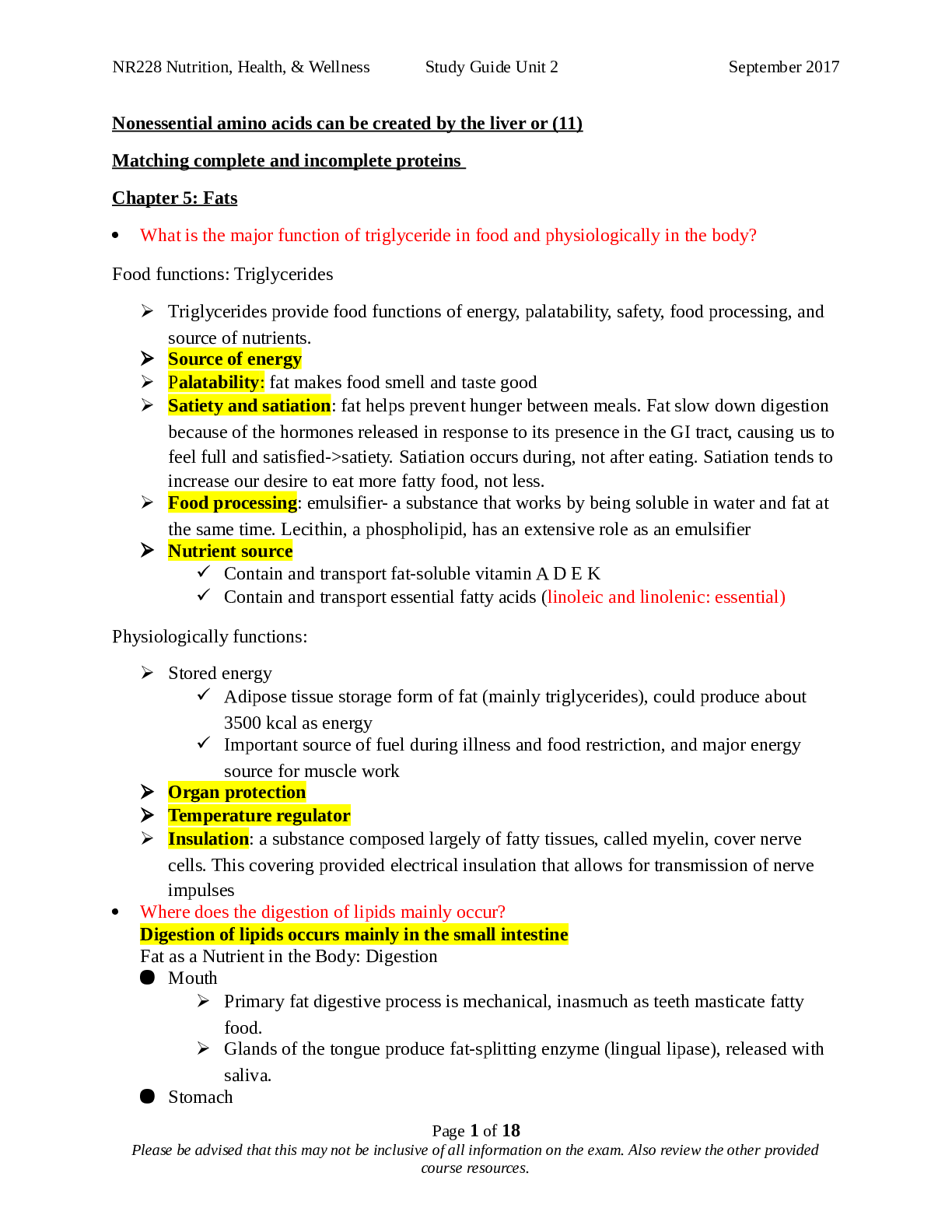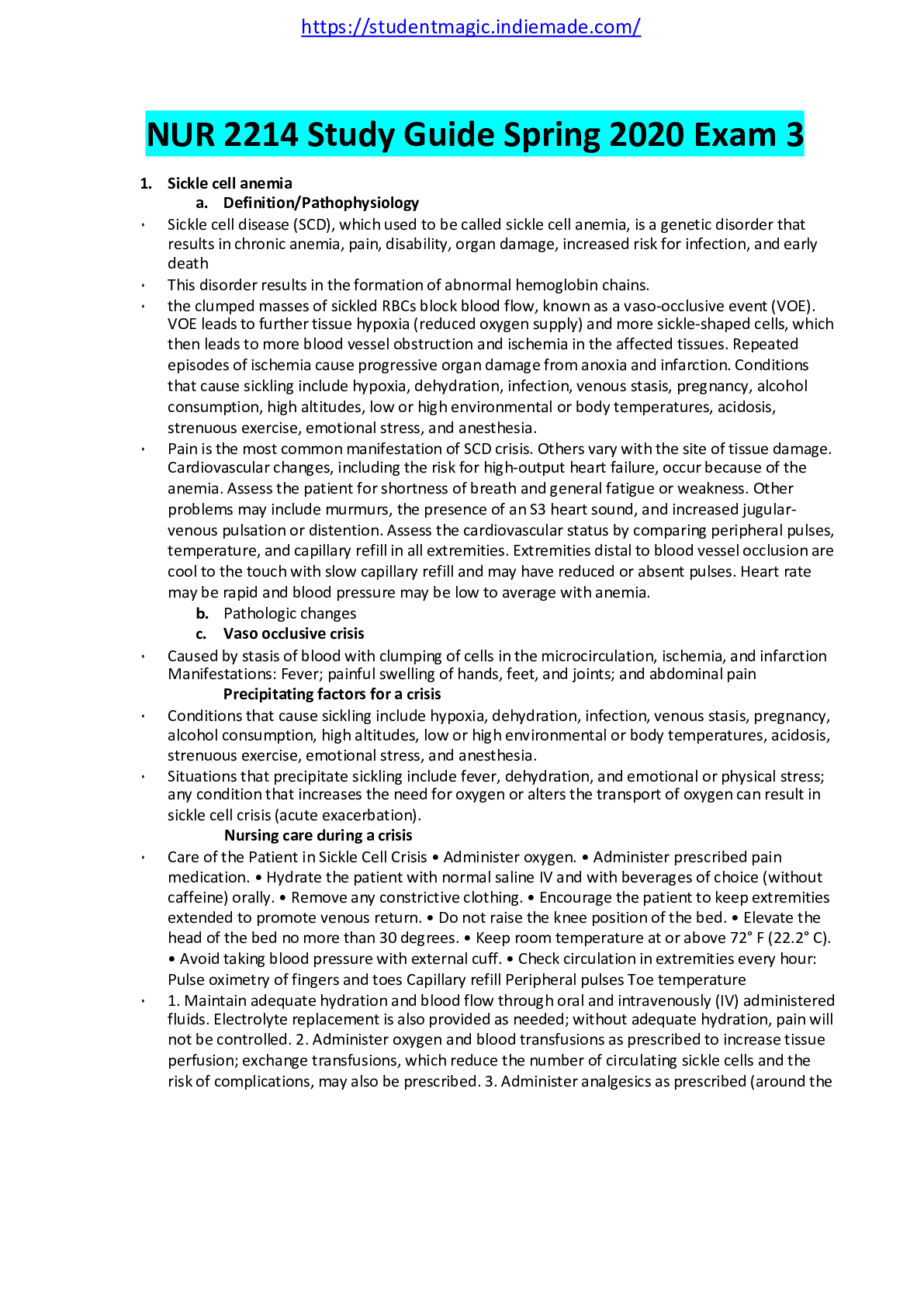Chemistry > STUDY GUIDE > Understanding Physical Chemistry Dor Ben-Amotz Purdue University (All)
Understanding Physical Chemistry Dor Ben-Amotz Purdue University
Document Content and Description Below
Understanding Physical Chemistry Dor Ben-Amotz Purdue University West Lafayette, IN Self-Published by Dor Ben-Amotz c April 22, 20192Contents 1 The Basic Ideas 11 1.1 Things to Keep in Mind . .... . . . . . . . . . . . . . . . . . . . . . . . 11 1.2 Why is Energy so Important? . . . . . . . . . . . . . . . . . . . . . . 15 1.3 Quantization is Everywhere . . . . . . . . . . . . . . . . . . . . . . . 23 1.4 Thermal Energies and Populations . . . . . . . . . . . . . . . . . . . 34 1.5 Classical Energy Hyper-Spheres . . . . . . . . . . . . . . . . . . . . . 47 1.6 Homework Problems . . . . . . . . . . . . . . . . . . . . . . . . . . . 56 2 Introduction to Chemical Thermodynamics 63 2.1 What is Thermodynamics Good For? . . . . . . . . . . . . . . . . . . 63 2.2 The Laws of Thermodynamics . . . . . . . . . . . . . . . . . . . . . . 67 2.3 Important Ideal Gas Examples . . . . . . . . . . . . . . . . . . . . . . 74 2.4 Homework Problems . . . . . . . . . . . . . . . . . . . . . . . . . . . 91 3 Axiomatic Foundations of Thermodynamics 99 3.1 Fundamental Equations and Postulates . . . . . . . . . . . . . . . . . 99 3.2 Temperature and Thermal Equilibrium . . . . . . . . . . . . . . . . . 110 3.3 Chemical and Phase Equilibria . . . . . . . . . . . . . . . . . . . . . 113 3.4 Euler and Gibbs-Duhem Relations . . . . . . . . . . . . . . . . . . . . 122 3.5 Transformed Potential Functions . . . . . . . . . . . . . . . . . . . . 125 3.6 Other Sorts of Thermodynamic Work . . . . . . . . . . . . . . . . . . 131 3.7 Homework Problems . . . . . . . . . . . . . . . . . . . . . . . . . . . 134 4 Thermodynamic Calculation Strategies and Applications 141 4.1 Reduction of Thermodynamic Derivatives . . . . . . . . . . . . . . . 142 4.2 Chemical Reaction Thermodynamics . . . . . . . . . . . . . . . . . . 151 4.3 Self-Assembly Thermodynamics . . . . . . . . . . . . . . . . . . . . . 155 4.4 Spontaneous Consequences . . . . . . . . . . . . . . . . . . . . . . . . 160 34 CONTENTS 4.5 Homework Problems . . . . . . . . . . . . . . . . . . . . . . . . . . . 172 5 Non-Ideal Systems and Computer Simulations 179 5.1 Quantifying Non-Idealities . . . . . . . . . . . . . . . . . . . . . . . . 180 5.2 Simple Models of Molecular Fluids . . . . . . . . . . . . . . . . . . . 182 5.3 Super-Molecule Statistical Mechanics . . . . . . . . . . . . . . . . . . 196 5.4 Mixed Points of View on Entropy . . . . . . . . . . . . . . . . . . . . 202 5.5 Kirkwood, Widom, and Jarzynski . . . . . . . . . . . . . . . . . . . . 208 5.6 Homework Problems . . . . . . . . . . . . . . . . . . . . . . . . . . . 220 6 Introduction to Quantum Mechanics 229 6.1 The Dawn of Quantum Phenomena . . . . . . . . . . . . . . . . . . . 229 6.2 The Rise of Wave Mechanics . . . . . . . . . . . . . . . . . . . . . . . 230 6.3 Wave Equations and Eigenfunctions . . . . . . . . . . . . . . . . . . . 232 6.4 Quantum Operators and Observables . . . . . . . . . . . . . . . . . . 238 6.5 Formal Postulates of Quantum Mechanics . . . . . . . . . . . . . . . 256 6.6 Homework Problems . . . . . . . . . . . . . . . . . . . . . . . . . . . 260 7 Simple Systems and Chemical Applications 265 7.1 Free, Confined, and Obstructed Particles . . . . . . . . . . . . . . . . 265 7.2 Quantum Harmonic Oscillators . . . . . . . . . . . . . . . . . . . . . 279 7.3 Raising and Lowering Operators . . . . . . . . . . . . . . . . . . . . . 284 7.4 Eigenvectors, Brackets and Matrices . . . . . . . . . . . . . . . . . . . 287 7.5 Three Dimensional Systems . . . . . . . . . . . . . . . . . . . . . . . 290 7.6 Homework Problems . . . . . . . . . . . . . . . . . . . . . . . . . . . 300 8 Atoms and Spinning Particle-Waves 309 8.1 The Hydrogen Atom . . . . . . . . . . . . . . . . . . . . . . . . . . . 309 8.2 Spin Angular Momentum . . . . . . . . . . . . . . . . . . . . . . . . . 317 8.3 Fermi, Bose, and Pauli Exclusion . . . . . . . . . . . . . . . . . . . . 323 8.4 Multi-Electron Atoms and the Periodic Table . . . . . . . . . . . . . 327 8.5 Homework Problems . . . . . . . . . . . . . . . . . . . . . . . . . . . 336 9 Covalent Bonding and Optical Spectroscopy 341 9.1 Covalent Bond Formation . . . . . . . . . . . . . . . . . . . . . . . . 341 9.2 Molecular Bonding Made Easy . . . . . . . . . . . . . . . . . . . . . . 353 9.3 Time Dependent Processes . . . . . . . . . . . . . . . . . . . . . . . . 361 9.4 Optical Spectroscopy . . . . . . . . . . . . . . . . . . . . . . . . . . . 364 9.5 Introduction to Ab Initio Methods . . . . . . . . . . . . . . . . . . . 378CONTENTS 5 9.6 Homework Problems . . . . . . . . . . . . . . . . . . . . . . . . . . . 386 10 Chemical and Photon-Molecule Reactions 395 10.1 Gas Phase Reaction Equilibria . . . . . . . . . . . . . . . . . . . . . . 395 10.2 Principles of Reaction Dynamics . . . . . . . . . . . . . . . . . . . . . 407 10.3 Prediction of Reaction Rate Constants . . . . . . . . . . . . . . . . . 410 10.4 Photon-Molecule Reactions . . . . . . . . . . . . . . . . . . . . . . . . 419 10.5 Homework Problems . . . . . . . . . . . . . . . . . . . . . . . . . . . 429 Appendices 437 A Answers to Problems that Test Your Understanding 437 B Fundamental Constants and Mathematical Identities 4436 CONTENTSPreface Physical chemistry has traditionally been understood as that field of study that links chemistry and physics, with a particular emphasis on mathematically modeling chemical processes. Nowadays, physical chemistry is rapidly evolving to include a fantastic variety of subjects ranging from biotechnology and quantum computing to nonlinear optics and nanoscience. Although these are clearly new directions, they are not inconsistent with the famous pronouncement that G. N. Lewis long ago made when he defined physical chemistry as \anything that is interesting." I also find it useful to think of physical chemistry as a subject whose primary goal is to physically understand the fundamental principles underlying the fascinating variety of chemical phenomena taking place in the world around us (and inside our bodies). Inspiring such a physical understanding is the principal aim of this book. While writing this book I kept two guiding principles firmly in mind { I only included material that I judged to be either too important or too interesting to exclude. This philosophy has produced a book that is both shorter and deeper than most other physical chemistry textbooks. I hope you will find that Understanding Physical Chemistry succeeds in stimulating an appreciation for the beauty and elegance of this fundamentally important and practically useful subject. Although Understanding Physical Chemistry does not sacrifice mathematical rigor, it also does not assume that students have anything more than a general knowledge of algebra and basic calculus. Applications of partial differential equations in thermodynamics and matrix algebra in quantum mechanics are fully introduced and explained in this book, without assuming any prior proficiency in these mathematical subjects. Moreover, extensive footnotes provide mathematical and historical information that is not critical to understanding the core ideas described in each chapter, but may be useful to students who wish to dig deeper. Understanding Physical Chemistry is primarily intended to accompany a full-year un- 78 CONTENTS dergraduate physical chemistry sequence, but is readily adaptable to shorter courses of various sorts (as further described below). A key feature of this book is its integrated and cohesive structure, which strikes a new balance in the presentation of quantum and classical descriptions of chemical systems. The first chapter entitled The Basic Ideas introduces foundational concepts such as energy, force, quantization, and thermal distributions. This overview is followed by chapters containing more detailed investigations of chemical thermodynamics, quantum mechanics, spectroscopy, and kinetics. Understanding Physical Chemistry stresses core ideas underlying physical chemistry, such as the entropic forces that drive all chemical processes and the quantum states that dictate the structures and colors of atoms and molecules. This book aims to demystify these core concepts by explaining where they come from, why they make sense, and how they may be applied to understanding topics ranging from molecular spectroscopy and chemical reactivity to biological self-assembly and liquid computer simulation strategies. The premise of this approach is that any student who emerges from a physical chemistry course with such an understanding will be ready to take on any conceptual challenges they are likely to encounter as an academic or industrial research scientist. Two categories of homework problems are provided at the end of each chapter: problems that illustrated core concepts and problems that test your understanding. The first category consists of problems designed to help students actively learn the key ideas presented in that chapter. The second category contains problems intended to help students prepare for exams (with answers provided in Appendix A). These homework problems could be used in various other ways, either by assigning only problems from the first category and leaving the second category for independent study, or by assigning a mix of problems from both categories, perhaps supplemented by additional problems designed to complement the instructor’s individual teaching and exam writing style. Understanding Physical Chemistry may be used in its entirety for a full-year (twosemester or three-quarter) physical chemistry sequence. Alternatively, some or all of Chapters 1-5 may be used in a shorter course focused primarily on chemical thermodynamics (with an introduction to quantum phenomena and statistical mechanics), while Chapter 1 as well as some or all of Chapters 6-9 may be used in a course focused primarily on quantum chemistry. Chapter 10, which describes chemical (and photon-molecule) reaction equilibria and kinetics, may be included in either of the above one-semester courses. It is also possible to use this book for a lower-level survey of physical chemistry by, for example, covering Chapters 1 (Sections 1.1-1.3CONTENTS 9 only), all of Chapter 2, Chapter 3 (part of Section 3.4, only to introduce H = U +PV and G = H − TS as definitions), Chapter 4 (Sections 4.1 and 4.2 only), Chapter 6 (Sections 6.1-6.4 only), Chapter 7 (Sections 7.1 and 7.2 only), Chapter 8 (Section 8.1 only), Chapter 9 (Sections 9.1 and 9.2 only), and Chapter 10 (Sections 10.1 and/or 10.2 only). Even in an in-depth course it is possible to skim over (or skip) some of the more advanced material appearing at the ends of some chapters. For example, one could briefly summarize (or skip) much of Section 1.5, which presents a derivation of the equipartition theorem, Section 4.4 on the consequences of irreversibility; some or all of Chapter 5 about nonideal gases, liquids, and theorems used in molecular dynamics simulations; Section 6.5 on the formal postulates of quantum mechanics; some or all of Sections 7.3, 7.4, and 8.2 on raising and lowering operators and matrix mechanics; as well as the introduction to ab initio methods in Section 9.5. However, even if these (or other) sections are not covered in detail, it may be useful to present some of the key results obtained in those sections (without the derivations) because of their fundamental importance and practical relevance. For example, although it is not necessary to present the mathematical derivations of the Maxwell-Boltzmann velocity distribution (Eq. 1.32), equipartition theorem (Eqs. 1.43 and 1.44), and the virial theorem (Eq. 1.46), it is important for students to be aware of these results, as they are made use of at various points throughout the book. Understanding Physical Chemistry owes much to the authors of many other excellent textbooks { well-worn copies of which adorn my bookshelf. In other words, many (if not all) of the ideas in this book are due to other brilliant people. For example, both the title and the pedagogical perspective of this book are inspired in part by two wonderful books entitled Understanding Chemistry (an introductory chemistry textbook written in the early 1970s by George Pimentel and Richard Spratley) and Understanding Molecular Simulations (a introduction to current computer simulation methods by Daan Frenkel and Berend Smit). There are many other books that I appreciate and admire, such as Feynman’s Lectures on Physics; Widom’s Statistical Mechanics, a Concise Introduction for Chemists; Chandler’s Introduction to Modern Statistical Mechanics; Golden’s Introduction to Theoretical Physical Chemistry; Lindsay and Margenau’s Foundations of Physics; Callen’s Thermodynamics; Reiss’ Methods of Thermodynamics; Hill’s An Introduction to Statistical Thermodynamics; Ratner and Schatz’s Introduction to Quantum Mechanics in Chemistry; and Laidler’s The World of Physical Chemistry, to name just a few, as well as fine physical chemistry textbooks by Atkins and de Paula, McQuarie and Simon, Engel and Reid, Castellan, Moore, Levine, Berry, Rice & Ross, Moelwyn-Hughes, and others.10 CONTENTS Numerous people, including Chris Jarzynski, Adam Wasserman, Eitan Geva, and Mark Sellke (as well as several anonymous reviewers) have provided comments and suggestions that have improved this book. The other people who have inspired me to write this textbook are far too numerous to list. These include all the teachers I have had, both in and out of school, from whom I have learned both what ideals to strive for and what pitfalls to avoid, as a teacher and as a person. My most important teachers have been my students, because teaching is a two-way conversation. It is often said that there is no better way to learn than to teach, which I have certainly found to be the case. I have also found that the converse is equally true, as the best classroom experiences are ones in which student comments, questions, and discussions inspire a synergy of collective understanding.Chapter 1 The Basic Ideas This chapter contains a summary of some of the most important ideas that underlie all of physical chemistry. In other words, it could be subtitled Ingredients in a Physical Chemists’ Cookbook or Tools in a Physical Chemists’ Workshop. These ideas are ones that physical chemists frequently refer to when they are having conversations with each other. So, you could think of this chapter as a quick-start guide to thinking, talking and walking like a physical chemist. Having these basic ideas in mind can help make physical chemistry less confusing by providing a broad overview of how various pieces of nature’s puzzle fit together to produce a big beautiful picture [Show More]
Last updated: 1 year ago
Preview 1 out of 436 pages

Reviews( 0 )
Document information
Connected school, study & course
About the document
Uploaded On
Jul 09, 2021
Number of pages
436
Written in
Additional information
This document has been written for:
Uploaded
Jul 09, 2021
Downloads
0
Views
31


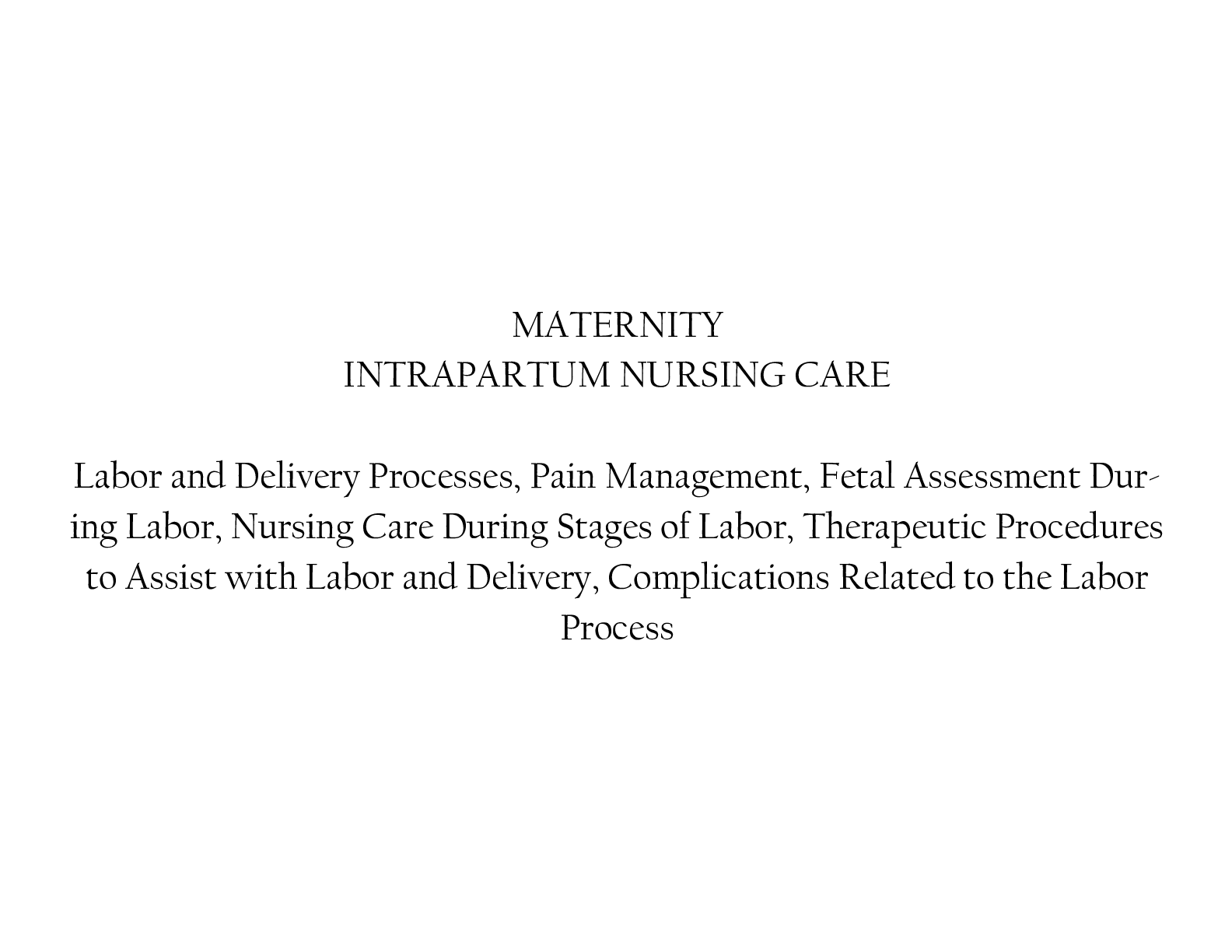

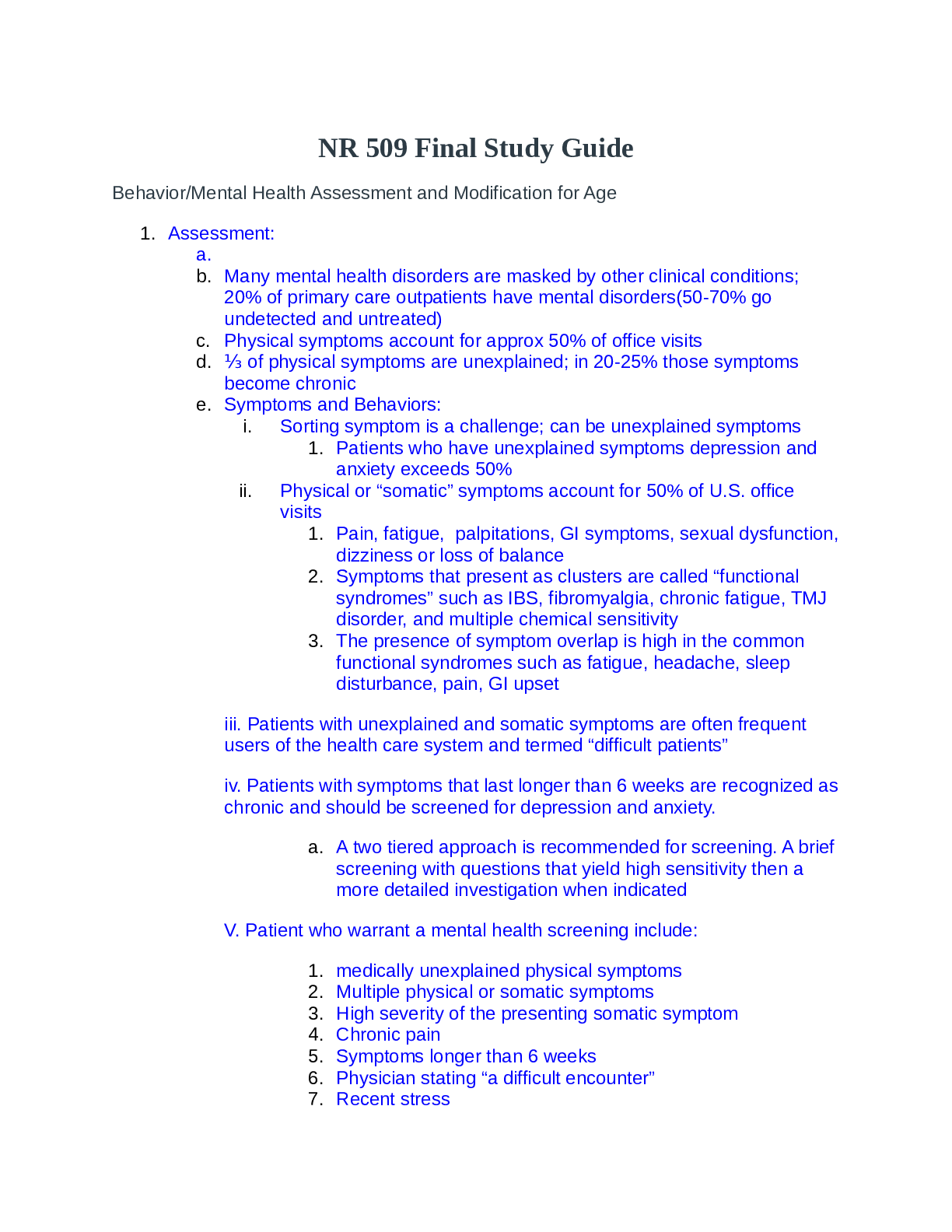
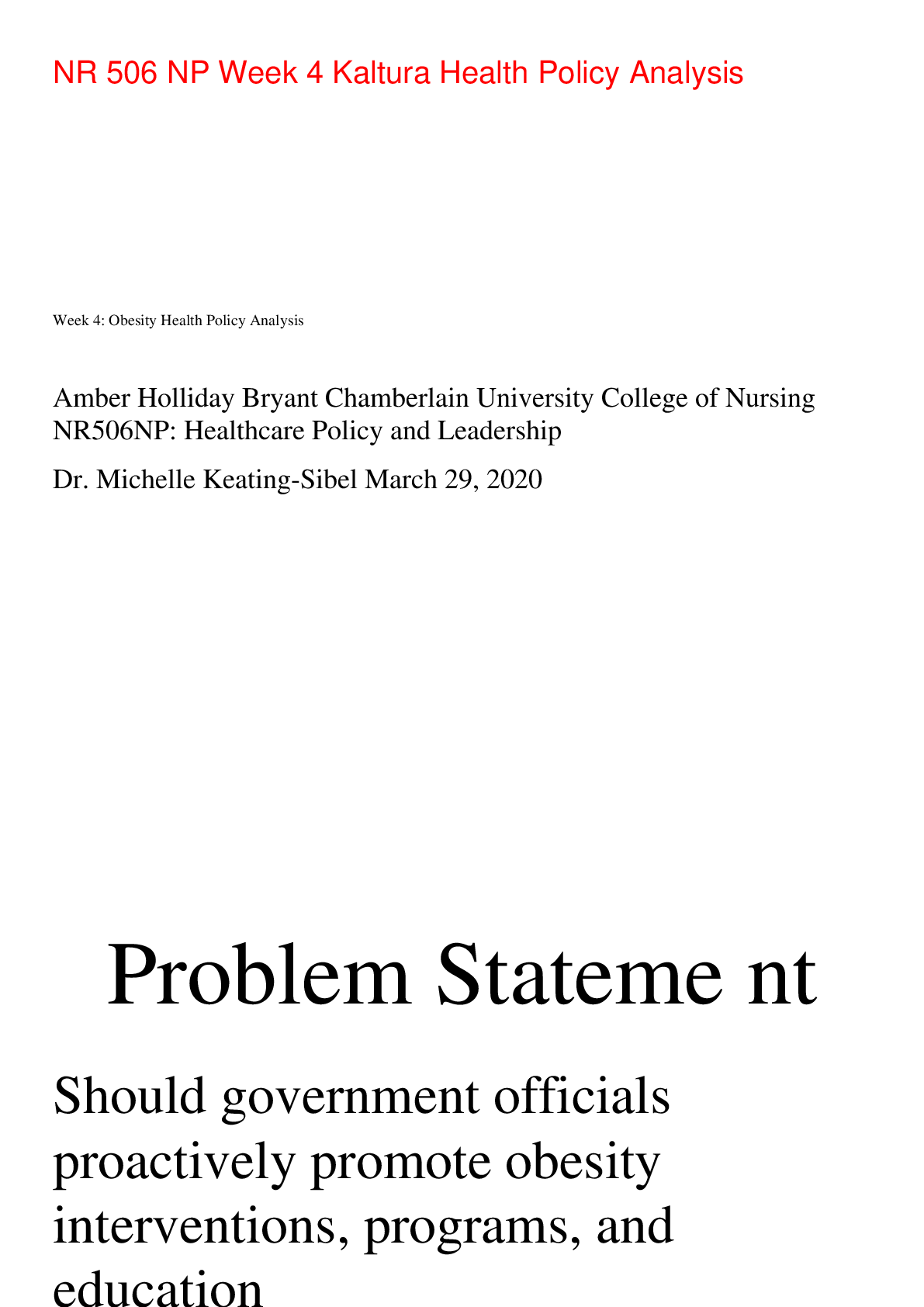
.png)
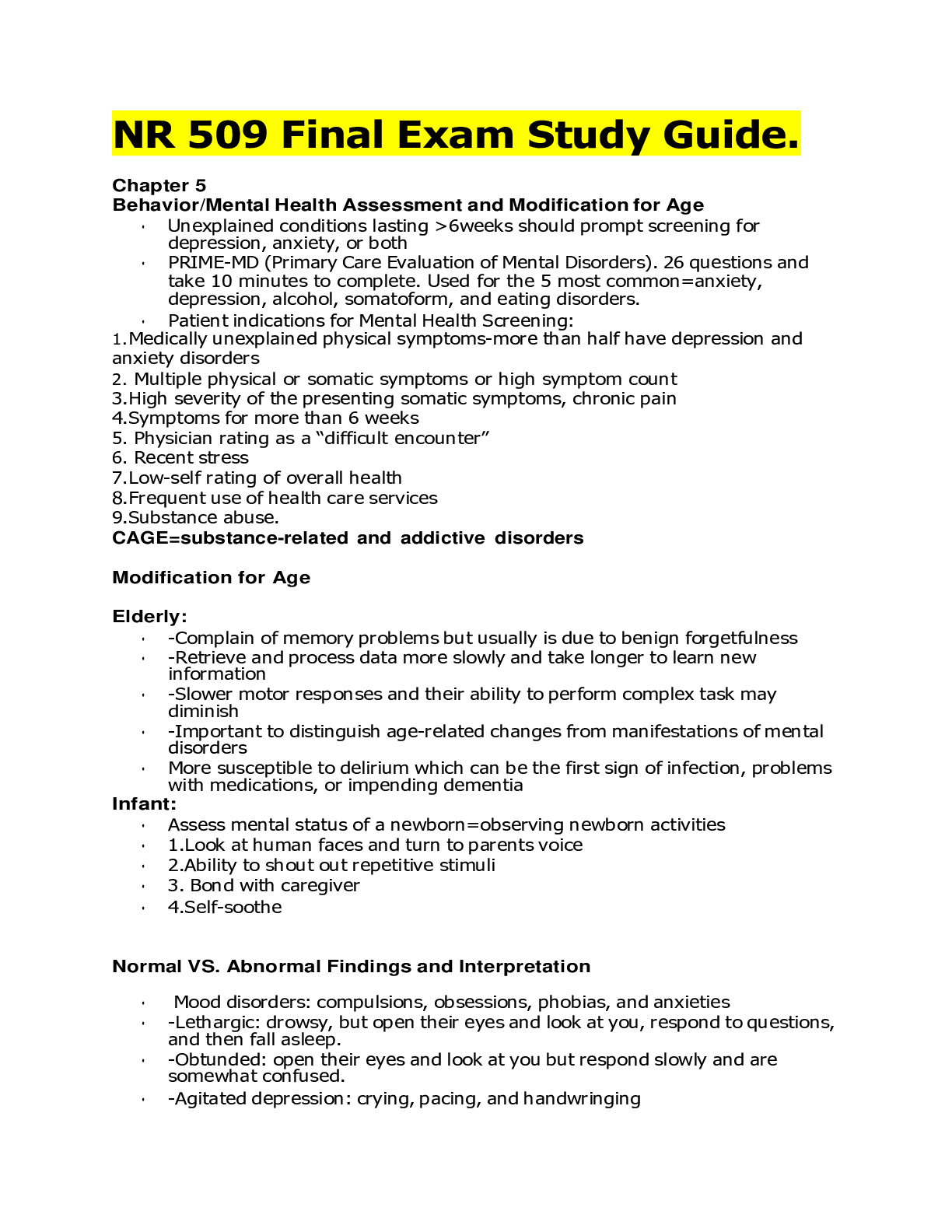
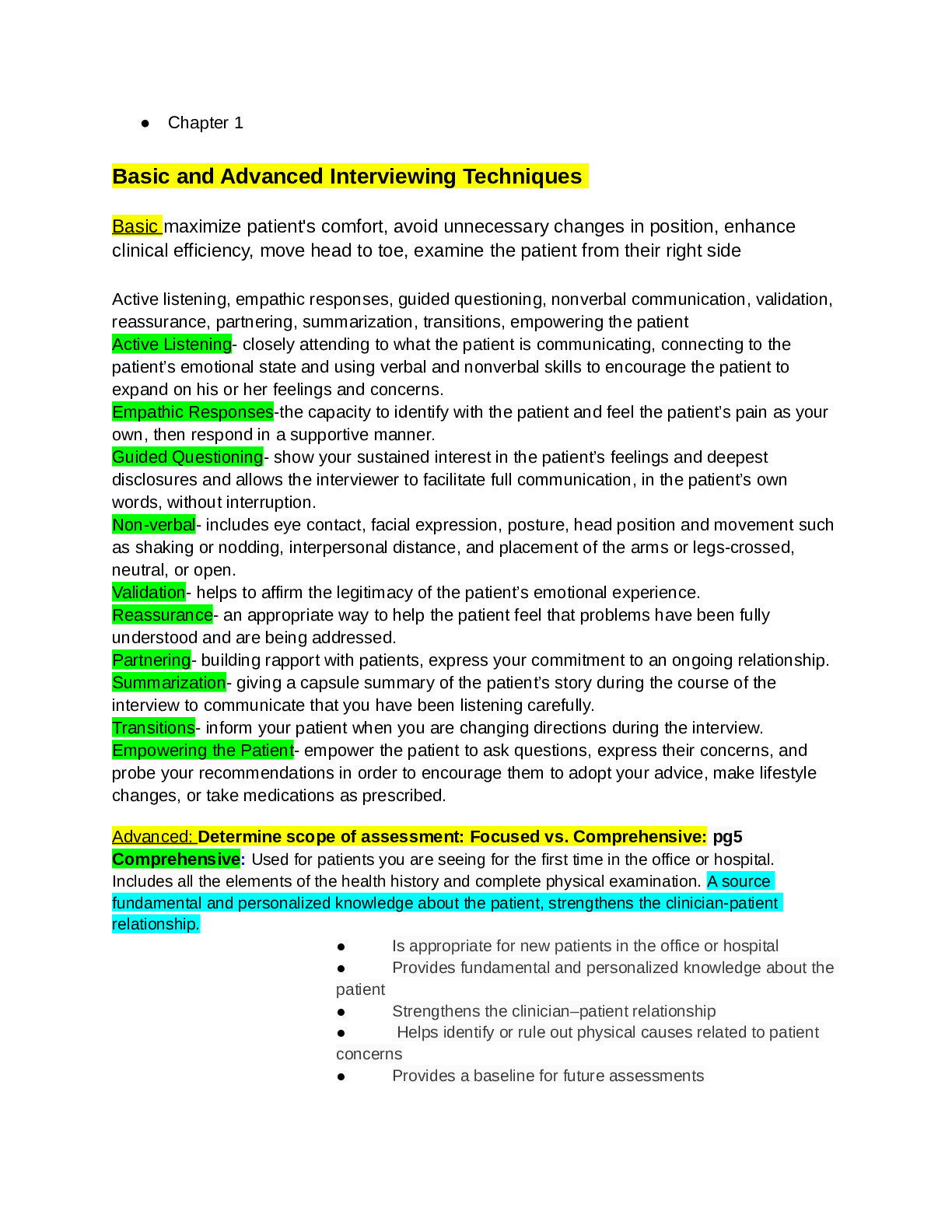



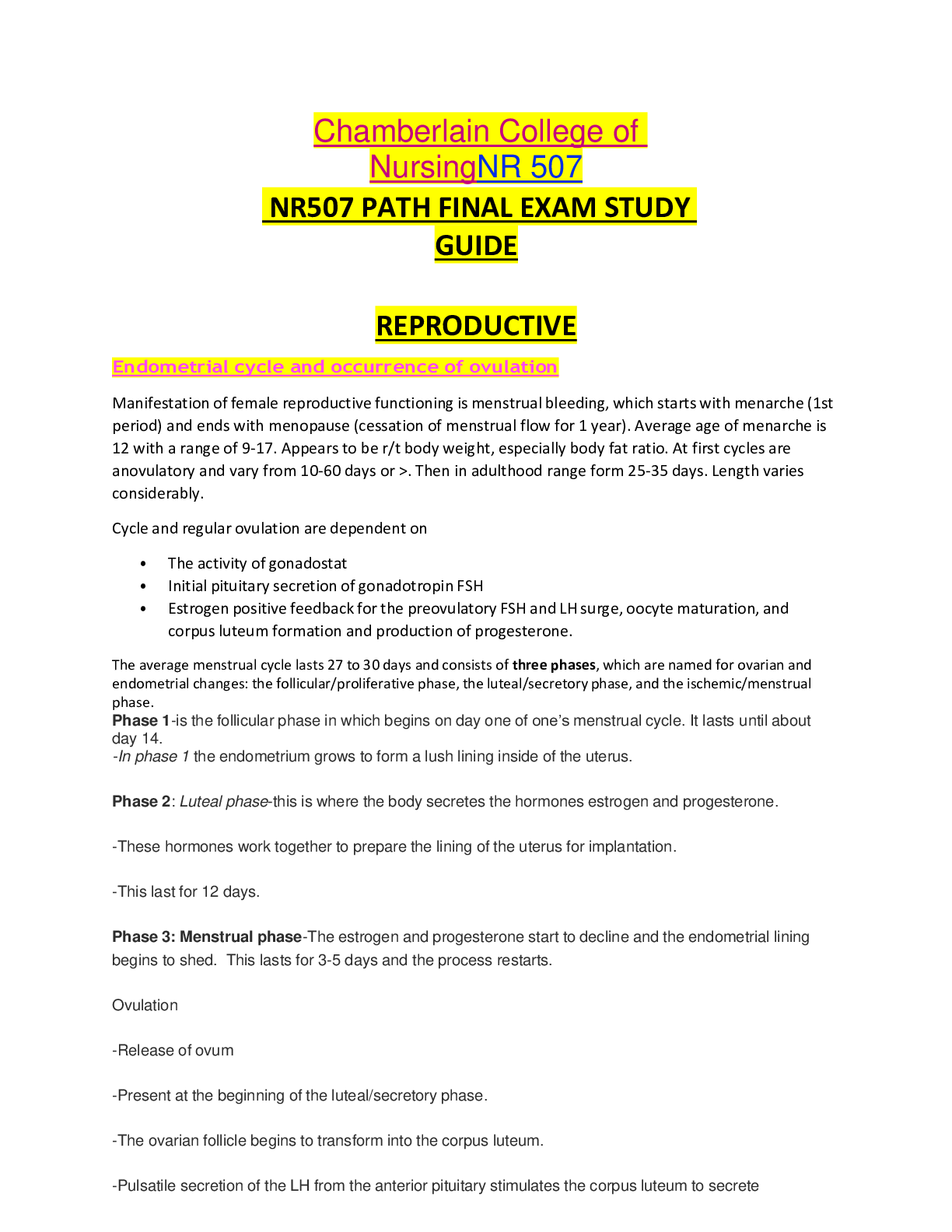
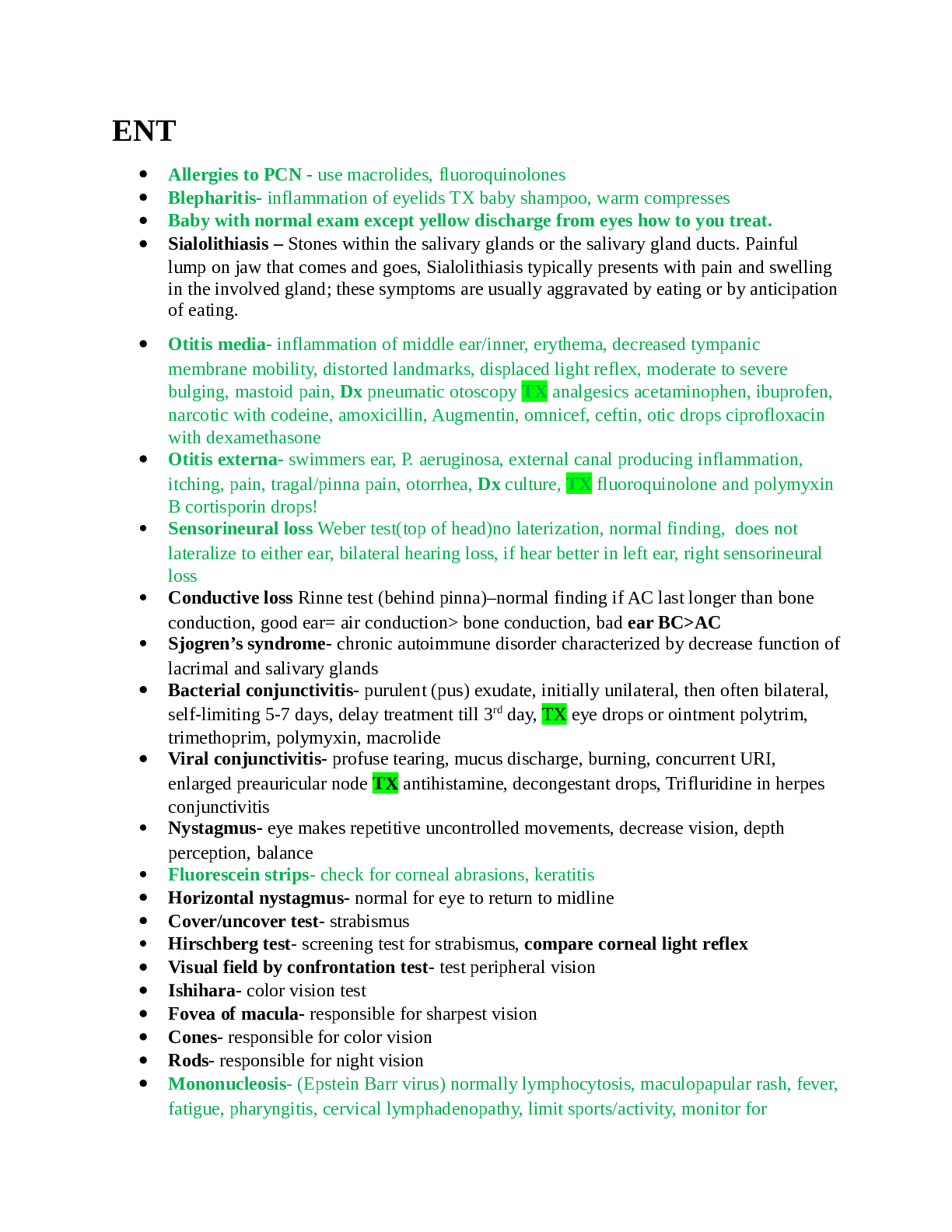


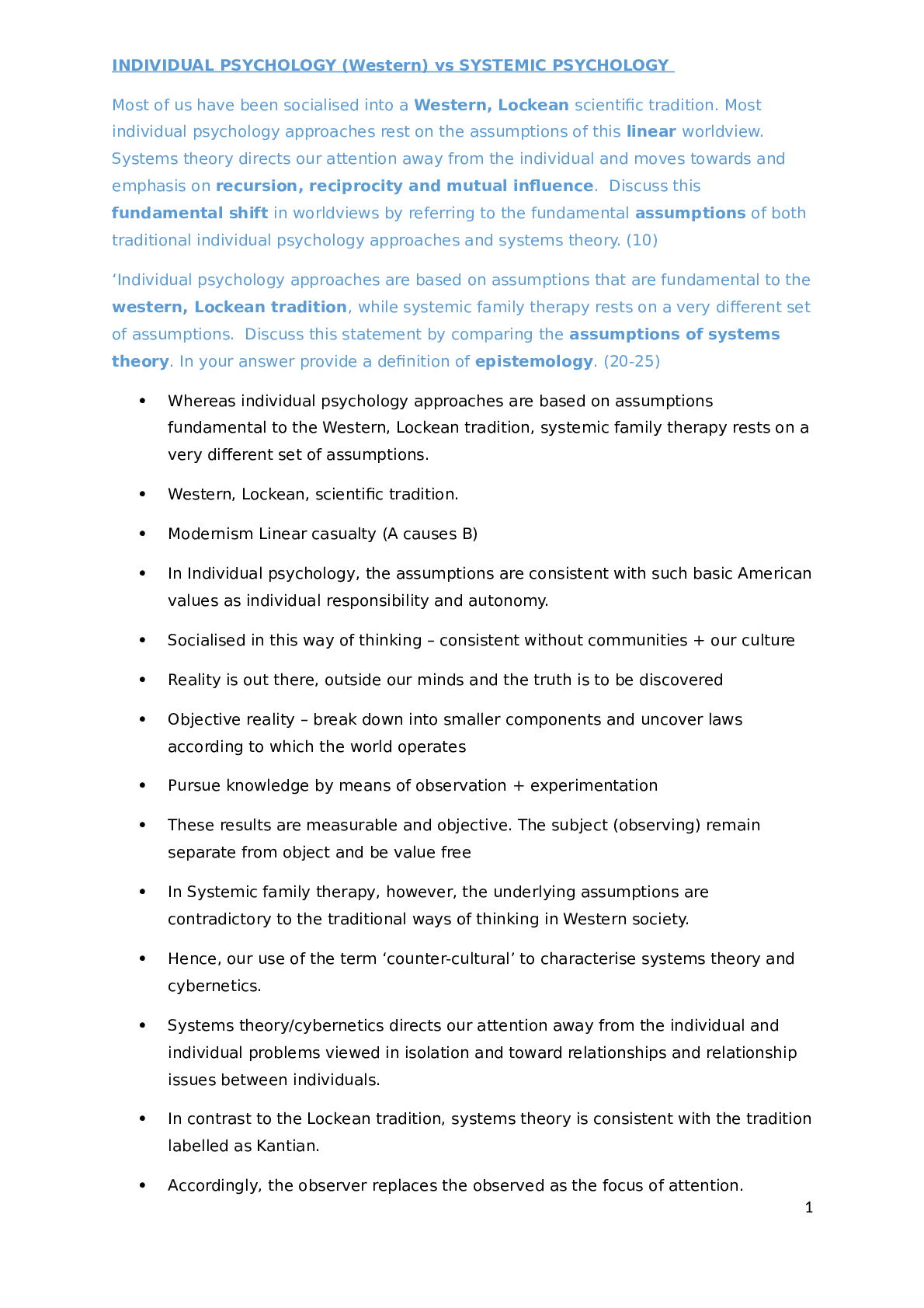








.png)





